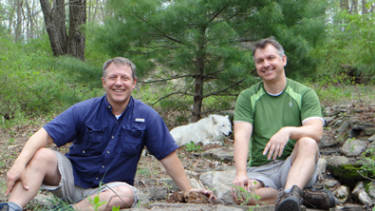Wild Alaska Live, a PBS and BBC co-production, captures life and survival in the Alaskan wilderness. This three-part, not-to-be-missed live event airs July 23, 26 and 30, at 5 pm on KQED Plus and at 8 pm on KQED 9, as a part of the PBS Summer of Adventure lineup. Over three nights, this multi-platform production turns the cameras on a must-see natural spectacle that plays out across the vast Alaskan wilderness, where some of the world’s most remarkable animals—bears, wolves, moose, orcas and eagles—gather by the thousands to take part in Alaska’s summer feast, an event never before captured live on television.
Wild Alaska Live is hosted by Emmy Award-winning zoologists, adventurers and brothers Chris Kratt and Martin Kratt, the creators, executive producers and stars of the hit PBS KIDS series Wild Kratts. They recently answered questions from PBS about the upcoming show.
PBS: What about exploring America’s last frontier and being a part of Wild Alaska Live is most exciting for you?
Martin Kratt: We’ve traveled all over the world on expeditions to some of the most remote wildlife locations, and we can say without a doubt that Alaska is a real treasure in terms of both sheer beauty and awe-inspiring wildlife. It’s one of the few remaining places on earth where you can truly experience raw, unspoiled wilderness. We’re looking forward to taking viewers along on an expedition-in-progress to get a unique look at a truly fascinating piece of our natural heritage.
Chris Kratt: Yes, it’s also exciting that this is going to be a live broadcast. One of the most thrilling aspects of any wildlife expedition is the fact that you never know exactly what to expect. In fact, you come to expect the unexpected. Animals and nature are unpredictable and will often surprise you with unexpected behaviors. That is why we love doing what we do. Wild Alaska Live strives to capture the thrill of an expedition-in-progress by embracing the unexpected with live broadcasts from remote locations around Alaska. We’ll be in all the right places for awesome wildlife encounters, but exactly what it is we will uncover is yet to be seen.
